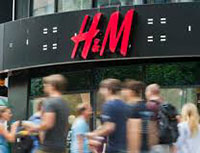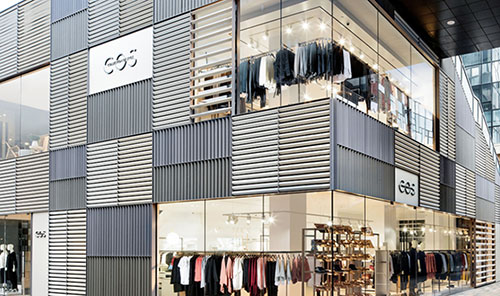"The Chinese fast fashion market has been in doldrums since the last two years with overseas brands struggling with declining profits. Brands like H&M and Forever 21 have been rolling back planned expansions as the recent annual report of H&M reveals. The brand’s net sales have declined from 7 per cent in 2016 to 3 per cent in 2017 and the brand was also forced to scale back on its physical expansion. In the first half of 2019, it closed two more stores. British fashion retailer Topshop exited the Mainland China market last November by pulling out all its products from Tmall."
 The Chinese fast fashion market has been in doldrums since the last two years with overseas brands struggling with declining profits. Brands like H&M and Forever 21 have been rolling back planned expansions as the recent annual report of H&M reveals. The brand’s net sales have declined from 7 per cent in 2016 to 3 per cent in 2017 and the brand was also forced to scale back on its physical expansion. In the first half of 2019, it closed two more stores. British fashion retailer Topshop exited the Mainland China market last November by pulling out all its products from Tmall. Forever 21 has also shut its online presence besides closing all stores, thus completely backing out of the country.
The Chinese fast fashion market has been in doldrums since the last two years with overseas brands struggling with declining profits. Brands like H&M and Forever 21 have been rolling back planned expansions as the recent annual report of H&M reveals. The brand’s net sales have declined from 7 per cent in 2016 to 3 per cent in 2017 and the brand was also forced to scale back on its physical expansion. In the first half of 2019, it closed two more stores. British fashion retailer Topshop exited the Mainland China market last November by pulling out all its products from Tmall. Forever 21 has also shut its online presence besides closing all stores, thus completely backing out of the country.
Though many overseas fast fashion brands had entered the Chinese market quite enthusiastically, they faced a tough time competing with local online retailers on websites like Tmall and Taobao. The tastes of Chinese consumers also shifted towards more elevated options, which hurt the operations of many fast fashion startups.
tough time competing with local online retailers on websites like Tmall and Taobao. The tastes of Chinese consumers also shifted towards more elevated options, which hurt the operations of many fast fashion startups.
Growing middle class offers huge opportunity
According to McKinsey & Company, the growing middle class will constitute around 75 per cent of Chinese urban consumersby 2022. This offers a huge opportunity to many fast fashion brands targeting the middle-end market, However, it is essential for these brands to understand the segmentation within this demographic to ensure the success of their initiatives. Constituting seasoned shoppers having a long-standing relationship with online retailers like Tmall and Taobao, these consumers are in search of new options not available online. On the other hand, local customers are losing interest in fast fashion due to the bad quality and noncompetitive prices offered by these brands.
High-end fast fashion brands, planning to enter the Chinese market, now have to choose between digital and brick-and-mortar operations. For example, & Other Stories opened its first sales platform on Tmall unlike its sister brand COS which opted for a physical store instead. This saves the brand a considerable amount of money as against building and operating physical stores. The platform charges a deposit of around $14,000 (100,000 RMB) for a flagship store, an annual service fee of $8,362 (60,000 RMB), and a commission of 3 to 5 percent.
Digital market influenced by past customer experiences
However, a digital-only strategy requires an extremely strong product, since the overseas brands have to compete with a wide range of offerings online. The digital market in China is being continuously influenced by a variety of similar options suggested by Taobao, as well as product reviews from previous customers. This makes it extremely difficult for newer players to enter the market. Premium fast fashion brands tend to stand out from the competition thanks to higher quality and elevated product design, but these brands still need to find alternative channels where they can communicate their identities to Chinese consumers.
It is easier for brands to build their physical presence once they establish themselves online as their online operations enable them to interact with consumers even further. For instance, “COS Fitting Room” has been commended by Chinese customers on the much-hyped social app and e-commerce platform Little Red Book for its minimal interior design, attractive lighting, and ample space, positioning the brand as more luxury than fast fashion. This invaluable in-store shopping experience reaffirms COS’ philosophy of timelessness while also impressing customers.
Having already established its presence in the European and North American markets, & Other Stories has now entered China. Though the brand’s price and positioning match well with China’s market gap, it faces many challenges from domestic fast fashion brands and the growing demands of Chinese customers. Whether the brand can deliver advanced products and unique experiences needs to be seen as what the emerging middle-class consumer looking for is a high-end experience whether in terms of a digital or in-store experience.












